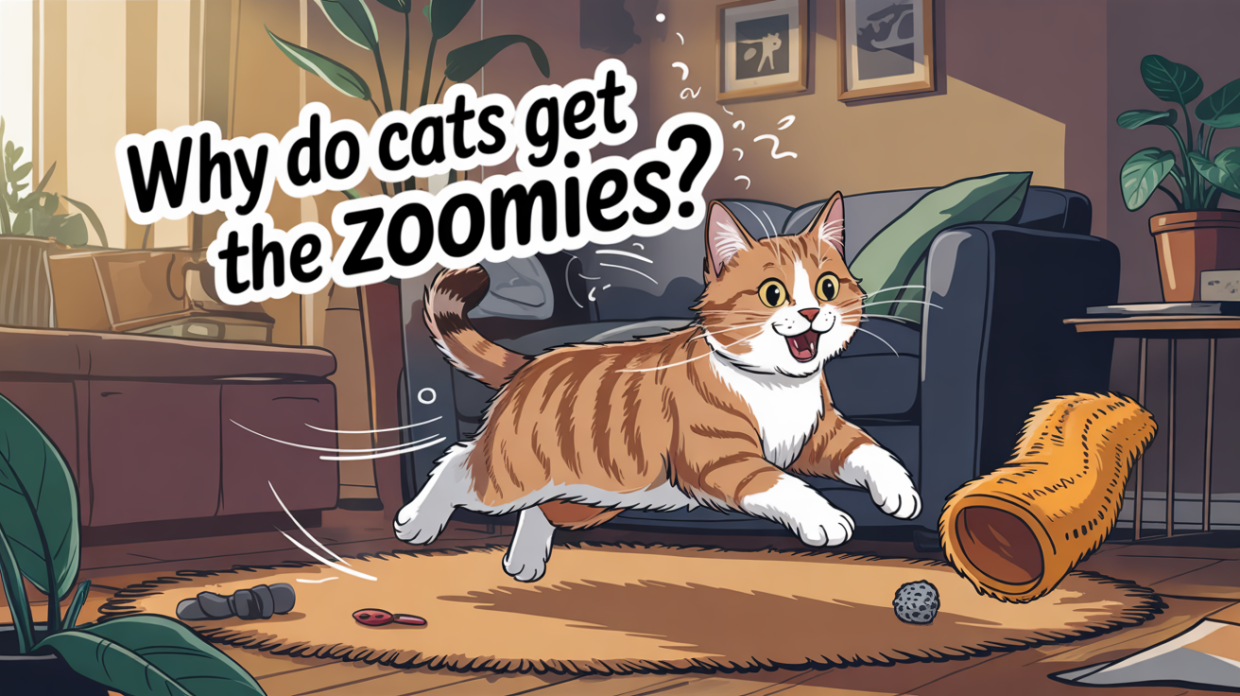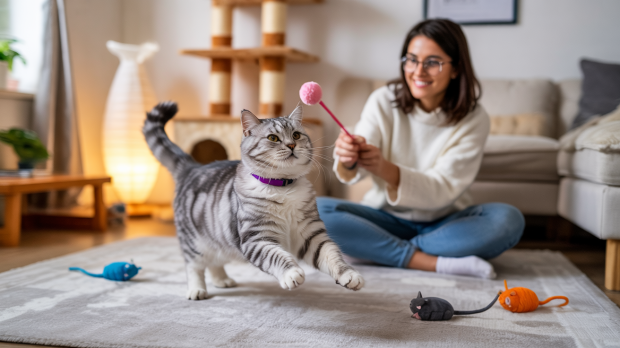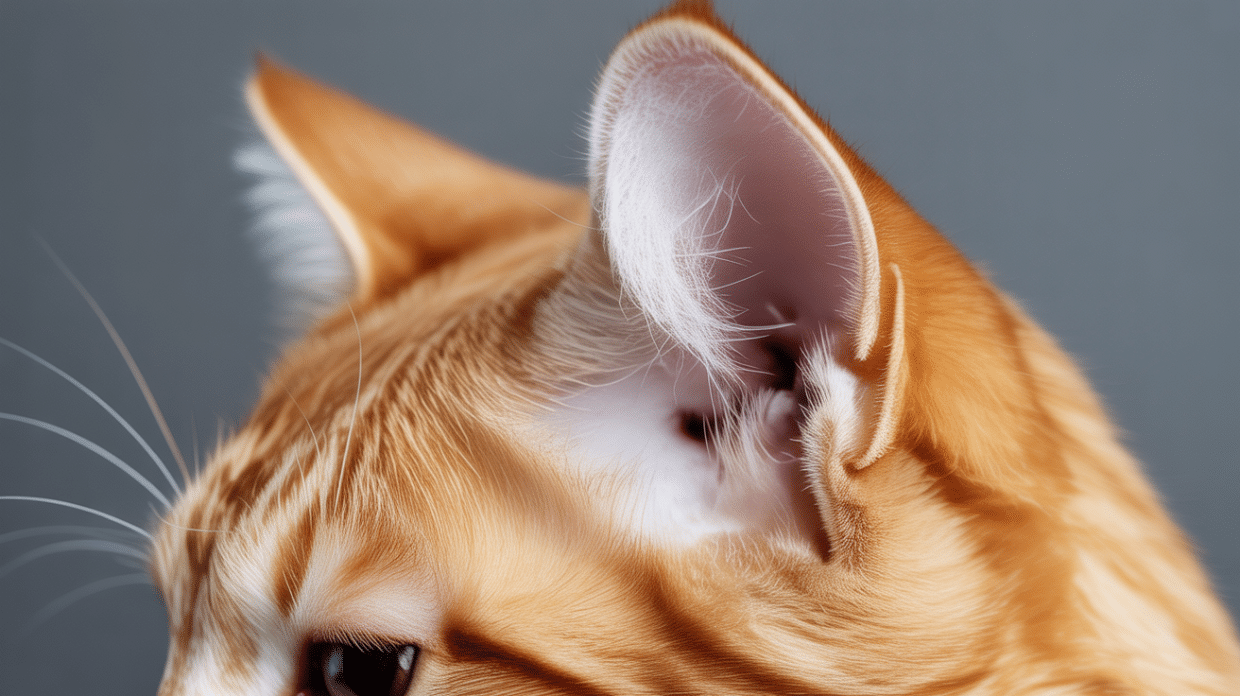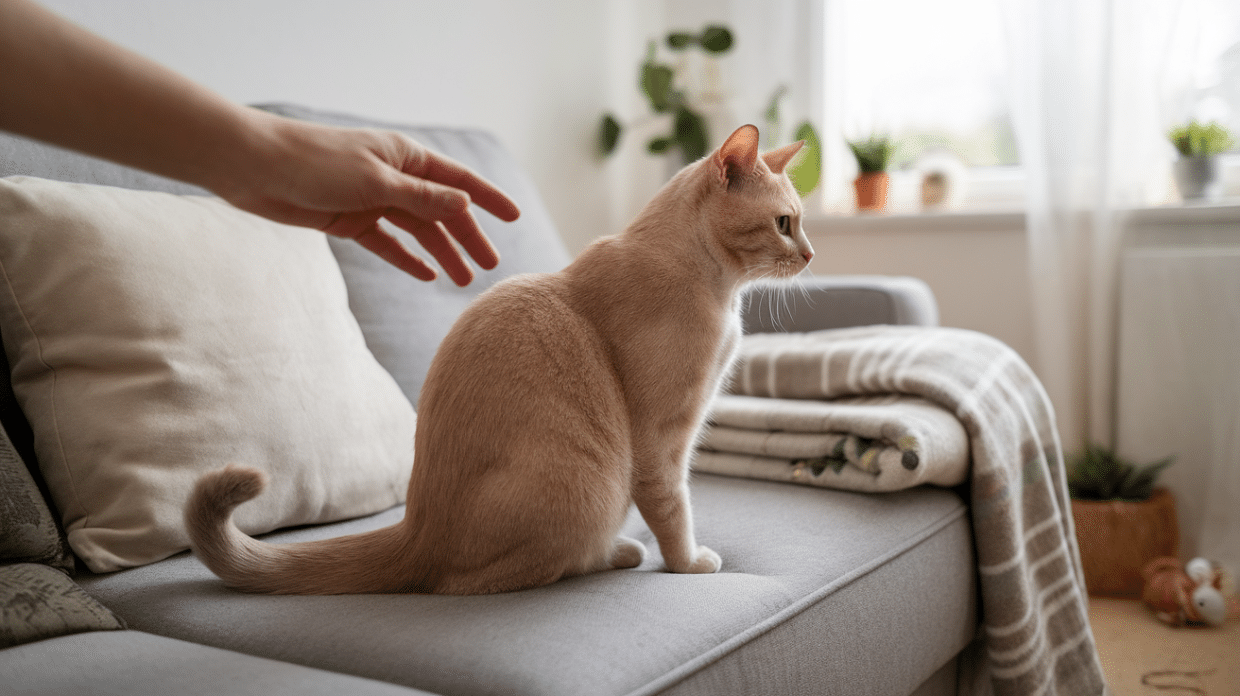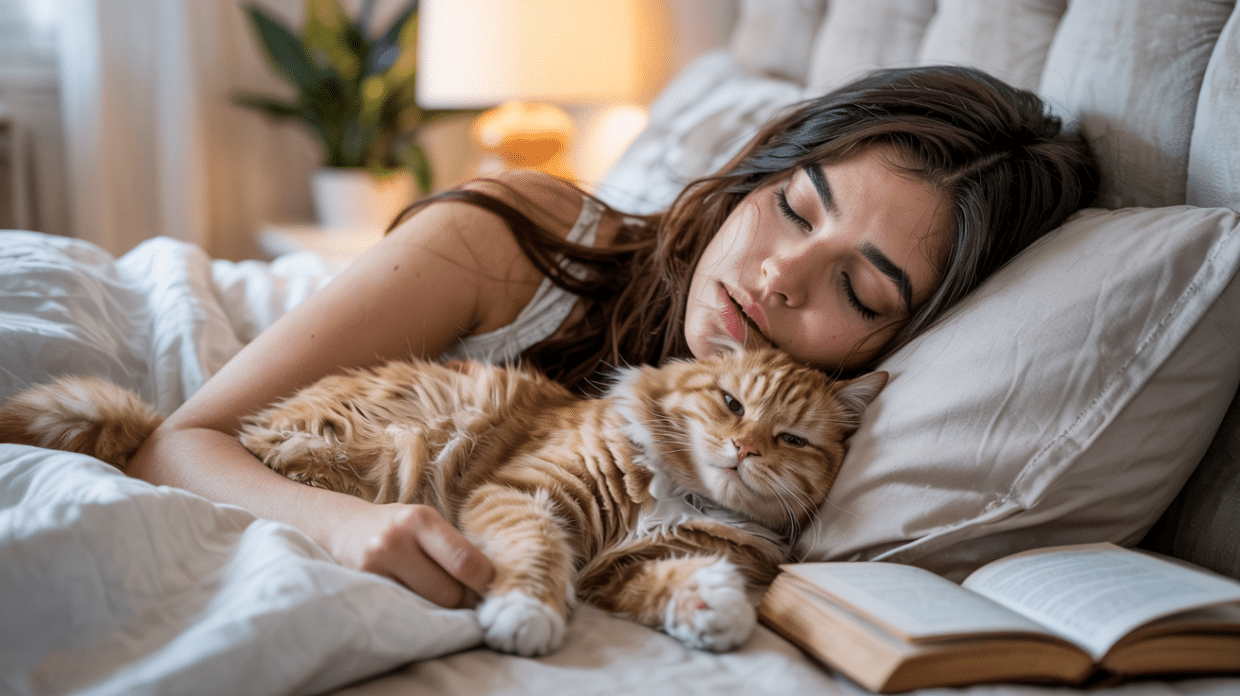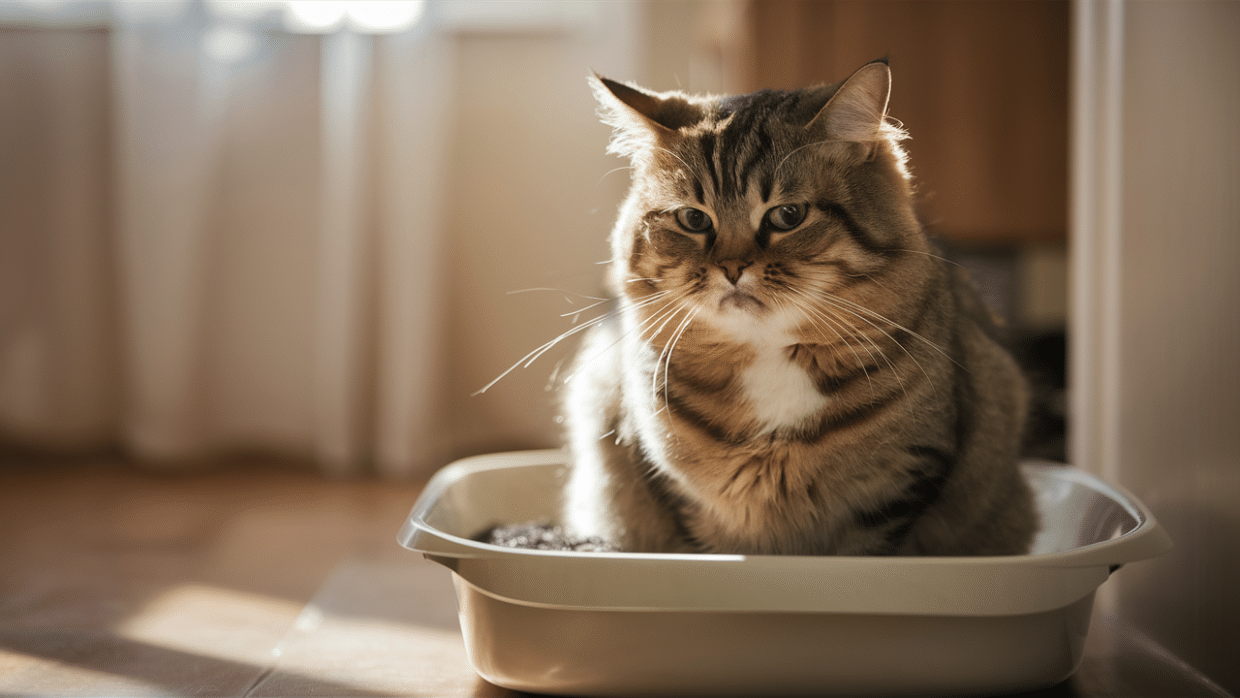Does your cat ever transform from peacefully napping to tearing through your house like they’re competing in the Cat Olympics?
These wild energy bursts, adorably called “the zoomies”, are one of the most entertaining—and sometimes puzzling—parts of cat ownership. While you might laugh as your furry friend races around, you’ve probably also wondered: “Why do cats get the zoomies?”
In this blog, we’ll see what causes these sudden sprints, when they typically happen, and how to handle them. You’ll learn when zoomies are just your cat being a cat and when they might signal something that needs attention.
By the end, you’ll better understand this quirky behavior and know how to make zoomie time fun and safe for everyone.
What are Cat Zoomies?
Cats are known for their sudden bursts of energy when they run around the house at top speed. They might race from room to room, jump on furniture, or dart up and down stairs for what seems like no reason at all.
These moments can be both funny and puzzling to cat owners.
Cat zoomies, also called FRAPs (Frenetic Random Activity Periods), are quick bursts of energy. Your cat might zoom around for a few minutes, then stop suddenly as if nothing happened.
These energy rushes are normal for most cats and happen when they need to burn off extra energy.
Common Causes of Cat Zoomies
Ever wondered why your furry friend suddenly tears through the house like a tiny tornado? There are several reasons behind these wild energy bursts.
Understanding what makes your cat zoom can help you better connect with their needs and natural behaviors.
- Pent-Up Energy from Sleeping or Boredom: Cats sleep up to 16 hours daily. This builds up energy that needs an outlet. Zoomies help release that stored-up energy in quick, fun bursts.
- Natural Hunting and Chasing Instincts: Your house cat shares DNA with wild hunters. Zoomies mimic the quick sprints cats use to catch prey in nature. These short bursts help keep their hunting skills sharp.
- Overstimulation During Play or Cuddling: Sometimes, too much petting or play can overwhelm your cat’s senses. When this happens, they might zoom away to reset.
- Bathroom-Related Relief Zoomies: Many cats zoom right after using the litter box. This odd behavior might be your cat’s happy dance after feeling relief, or their attempt to run away from smells they don’t like.
- Stress Release or Excitement: Cats use zoomies to manage their feelings. These energy bursts help cats handle big emotions when words aren’t an option.
- Nocturnal Activity Rhythms: Your cat’s wild ancestors hunted at dawn and dusk. Even with comfy home lives, cats keep these active times in their body clocks. Evening zoomies often happen because your cat is following ancient hunting patterns.
- Sudden Diet- or Food-Related Triggers: What your cat eats can spark zoomies. Some foods give quick energy boosts that turn into zoom sessions. Other times, a cat might zoom after eating if they’re feeling good or have a sudden burst of food energy.
When are Zoomies Most Likely to Happen?
Timing is everything with cat zoomies! You might notice patterns in when your furry friend decides to zoom around. These common timing triggers can help you predict when your home might turn into a cat racetrack.
Understanding these patterns helps you see your cat’s behavior as normal rather than strange.
After Meals
Just finished filling your cat’s bowl? Watch out. Many cats get a burst of energy right after eating. It’s like their version of a happy dance or a quick workout to burn off those fresh calories.
Your cat might zoom around to celebrate a tasty meal or use that new food energy.
Late at Night (the “Midnight Zoomies”)
Ever been woken up by your cat racing through the house at 2 AM? You’re not alone. Cats are most active at dawn and dusk because of their wild hunting roots.
When you’re trying to sleep, your cat is often hitting their energy peak. Those midnight zoomies are just their natural rhythm at work.
After Litter Box Use
The post-bathroom dash is a classic cat move. You might see your cat bolt from the litter box like they’re running from something scary.
This common behavior might be their way of feeling fresh and clean, or perhaps they’re just happy to have taken care of business.
Post-Nap Routines
Cats sleep a lot—up to 16 hours daily. After a long nap, they often wake up ready for action.
Think about how you stretch after sleeping; your cat does the same, but adds speed! These post-nap zoomies help them shake off sleepiness and get their muscles moving again.
Are Zoomies Normal or a Cause for Concern?
Most of the time, zoomies are just your cat being a cat! But like with any behavior, there are times when changes might signal something else is going on.
Let’s look at when to enjoy the show and when you might want to check in with your vet about your cat’s zoom sessions.
When It’s Just Play
For most cats, zoomies are totally normal and healthy. Your furry friend is just burning off extra energy and having fun. Those wild running sessions help keep your cat fit and happy.
You’ll know it’s normal play when your cat seems to be enjoying the race around your home. Their body language stays relaxed, their tail might be up, and they often have a playful look in their eyes.
When It Might Be Medical (Skin issues, hyperthyroidism)
Sometimes zoomies can signal health issues that need attention. If your cat suddenly starts having many more zoom sessions than usual, or if they seem stressed during these episodes, it’s worth a vet check.
Skin problems might make your cat run to escape the itchiness. Hyperthyroidism (an overactive thyroid) can cause extra energy and restlessness.
Other signs to watch for include weight loss, increased appetite, or if your cat seems upset rather than playful during zoomies.
Zoomies in Kittens vs Senior Cats
Age plays a big role in zoom behavior! Kittens have tons of energy and are learning to use their bodies, so frequent zoomies are part of growing up. Your kitten needs these play sessions to develop muscles and coordination.
Senior cats usually have fewer zoomies as they slow down with age. If your older cat suddenly starts zooming like a kitten again, it could be a sign of thyroid issues.
On the flip side, if your young cat never zooms, they might not be getting enough mental or physical stimulation.
How to Handle Cat Zoomies
Living with a zooming cat can be both entertaining and sometimes challenging. The good news is you can work with your cat’s natural energy bursts rather than fighting against them.
Here are some simple ways to make zoomie time fun and safe for everyone in your home.
Letting it Happen Safely
Your cat needs these energy releases, so trying to stop zoomies completely isn’t the answer.
Instead, focus on making your home a safe zoomie zone. Move breakable items from shelves and tables where your cat might jump. Keep cords tucked away to prevent tripping or chewing.
Make sure windows are secure if your cat likes to zoom onto windowsills. When my cat gets the zoomies, I just sit back and enjoy the show from a safe distance.
Redirecting the Energy with Toys
When you see the telltale signs that a zoomie session is coming, grab a toy and guide that energy into play. Wand toys let your cat chase and pounce while keeping your hands safe from excited claws.
Throwing a small toy for your cat to chase can turn random zooming into focused play. Interactive toys like treat puzzles can also help your cat use their energy in a more controlled way.
Your cat gets the same energy release but with an added bonding opportunity.
Creating Playtime Schedules
Regular play sessions can help reduce random zoomies by giving your cat planned energy outlets.
Try setting aside 10-15 minutes twice a day for active play with your cat. Morning and evening sessions work well for most cats, matching their natural active periods.
Consistent playtimes help your cat know when to expect fun, which can reduce those surprise zoom attacks in the middle of your video calls or dinner parties.
Avoiding Overstimulation
Sometimes zoomies happen because your cat feels overwhelmed by too much petting or attention. Learn to spot your cat’s “enough” signals – twitching tail, flattened ears, or skin rippling.
When you see these signs, give your cat space before the zoomies kick in. Every cat has different limits for how much touching they enjoy. Respecting these boundaries helps your cat feel safe and reduces stress-based zooming.
Managing Late-Night Zoomies
Those 3 AM racing sessions can be tough when you’re trying to sleep. Try a more intense play session right before your bedtime to tire your cat out. Feeding your cat their main meal in the evening can also help, as many cats like to sleep after eating.
Some cat owners set up “zoom rooms” away from bedrooms where cats can play at night. Closing bedroom doors might be necessary if your sleep keeps getting interrupted by nighttime cat races.
When to Talk to Your Vet
While zoomies are usually just your cat having fun, sometimes they can signal health problems that need attention. Trust your gut feeling—you know your cat best.
If something about their zoomies seems off or different from their normal pattern, it’s worth a vet check. Look for signs like yowling during zoomies, running that seems panicked rather than playful, or if your cat seems confused after zooming.
Taking a quick video of the behavior can help your vet understand what’s happening and give you better advice.
Final Thoughts
Cat zoomies are one of those funny, charming behaviors that make our feline friends so special.
From those post-litter box sprints to middle-of-the-night races, your cat’s zoomies are typically just their way of expressing joy, releasing energy, or following their natural instincts.
Now that you understand why cats get the zoomies, you can enjoy them rather than worry about them.
Creating safe spaces for zooming, setting up regular play sessions, and knowing when to call the vet gives you all the tools you need to handle this natural cat behavior.
Remember, those wild moments when your cat tears around the house are usually signs of a happy, healthy pet.
So next time your cat zooms past you, just smile knowing they’re just being their authentic, wonderful feline self.

